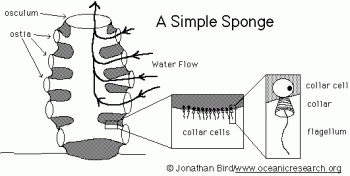By Vidya Rajan, Columnist, The Times
I have always been fascinated by mouths and the teeth and tongues that lie inside them. Mouths are both structurally amazing and functionally diverse. We eat with our mouths, use it to communicate with sounds, express emotions, and also with breathing functions. Mouths contain tongues, one of the softest, strongest, and most sensitive muscles in our body, but they also contain teeth, which have to be hard to tear and masticate food. Mouths in our phylogenetic past are also curious and instructive. In this article, I will review one mouth (with tongues and teeth, where available) from all the animal phyla, starting with invertebrates in this article, and vertebrates in a future article.
It may surprise you that the earliest “animals” were sponges; yes, your bath sponge is a dead, dried animal, and an early ancestor to all animals [1]. But they lack structure: most sponges are an agglomeration of cells that work cooperatively. If you put a living sponge through a sieve to break it up to single cells, the cells will move towards each other and coalesce again into a functional animal. And since they are animals, they need to eat. Individual cells trap food particles in water currents which enter through mouth-like pores called ostia all over their bodies, and exits through a single osculum which functions as an anus (Figure 1; [2]).
Jellyfish are phylogenetically the next more complex animal. They actually have a “real” mouth, an intake hole through which food passes into an enclosed gut cavity with digestive juices secreted by the lining cells. After digestion, waste is expelled through the same opening it came in by: the mouth is also conveniently the anus (Figure 2).

Figure 2: Anatomy of a jellyfish.
Credit: Original author: Zina Deretsky, National Science Foundation; converted into modified SVG by Whidou and KDS4444. https://en.wikipedia.org/wiki/Jellyfish#/media/File:Anatomy_of_a_jellyfish-en.svg.
Although structurally more complex than jellyfish, flatworms retained this mechanism. The mouth in these creatures is located on an extensible pharynx, and leads into a gut cavity, one which branches to supply every cell of the flatworm with food (Figure 3). Thus, the gut is a digestive, circulatory, and respiratory system all in one. Maybe a floppy extensible mouth does not sound intimidating? Perish the thought! Flatworms are awesome predators! They chase down and consume earthworms and snails, both much more complex creatures, and much higher on the evolutionary scale (see https://youtu.be/1vT90AVo3-s (earthworm) and https://youtu.be/ZH6Hqad4ICo (snail)). I think being sucked to death must suck so badly. Then to have your remains to be regurgitated through the mouth? No, that is not cool.







